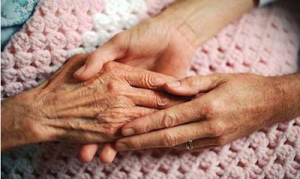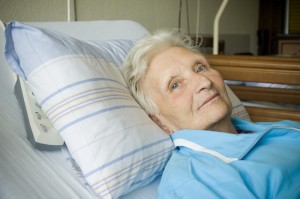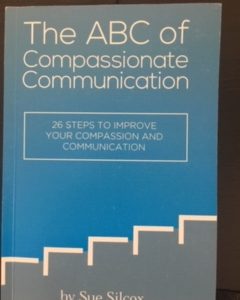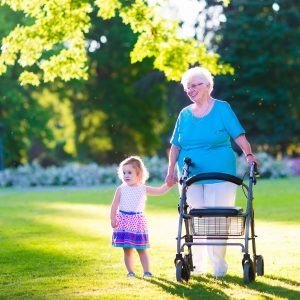
My friend Andrew shared with me his reflections on the care his family received while his mother was in the hospital dying. He poured out his heart on paper to discuss how frequent expressive touch was a comfort to his mother, and himself.
He writes, “We would kiss her forehead, touch her shoulder or hold her hand with varied responses. Holding her hand was the clearest communication and the best way to tell if she was with us or not. Most days she would squeeze our hands or lift them to her face for a kiss. At times, these actions were silent, and other times accompanied by grunts or whispers or even an attempt to speak.”
“The staff were lovely and compassionate people who understood her needs, but also our needs as family members. I saw many nurses and aides greet Mom on a good day with a hug or try to wake her gently with a hand on her shoulder, but there were also hugs for us.”
“We craved something to do, some way to comfort her and let her know she wasn’t alone. These small gestures of touch were all we had in her final days and the only way we could communicate with her.”
Touch: A Final Connection
“In the end, she no longer responded to touch because hospice was doing their job correctly. We will never know what she understood and felt in those precious moments, so we continued to touch her. That small amount of physical contact was as much a comfort to us as we hoped for her.”
“Holding her hand, the hand that comforted me as a child, was again comforting me as an adult.”
Andrew’s words flew off the page at me because it gets to the heart of the work we do at the AGE-u-cate Training Institute with Compassionate Touch training. Touch is the first sense that develops in the womb and is a fundamental human need throughout our life course. Through touch, care-giving professionals who work with families of dying persons can positively impact end-of-life care for both patient and family.
Thank you, Andrew, for reminding us of the impact that touch can have on the living, and the dying.
Shared by permission from Andrew Azzarello, a person with a personal and professional passion for eldercare. Andrew continues caregiving responsibilities for his father and is the former Director of Human Resources for two aging services organizations.
 Julie has worked in Aging Services for over 30 years and has been a Licensed Nursing Home Administrator since 1990. She is a Certified Master Trainer with the AGE-u-cate Training Institute. Through her company Enlighten Eldercare, Julie provides training and educational programs on elder caregiving to private and professional caregivers. She is an instructor and the Interim Director of Gerontology at Northern Illinois University and lives in the Chicago Northwest Suburb of Mount Prospect, IL.
Julie has worked in Aging Services for over 30 years and has been a Licensed Nursing Home Administrator since 1990. She is a Certified Master Trainer with the AGE-u-cate Training Institute. Through her company Enlighten Eldercare, Julie provides training and educational programs on elder caregiving to private and professional caregivers. She is an instructor and the Interim Director of Gerontology at Northern Illinois University and lives in the Chicago Northwest Suburb of Mount Prospect, IL.

 I’m delighted to share that our Australian Master Trainer, Sue Silcox has authored and published a book – The ABC of Compassionate Communication. Sue is passionate about helping people become empowered through learning, practice, support, and self-care.
I’m delighted to share that our Australian Master Trainer, Sue Silcox has authored and published a book – The ABC of Compassionate Communication. Sue is passionate about helping people become empowered through learning, practice, support, and self-care. March 3 -7 is Careers in Aging Week and an appropriate time to talk about the importance of this topic. No longer are the shortages of direct care staff and others in long term care a subject of the future. The crisis is looming and it is serious.
March 3 -7 is Careers in Aging Week and an appropriate time to talk about the importance of this topic. No longer are the shortages of direct care staff and others in long term care a subject of the future. The crisis is looming and it is serious.